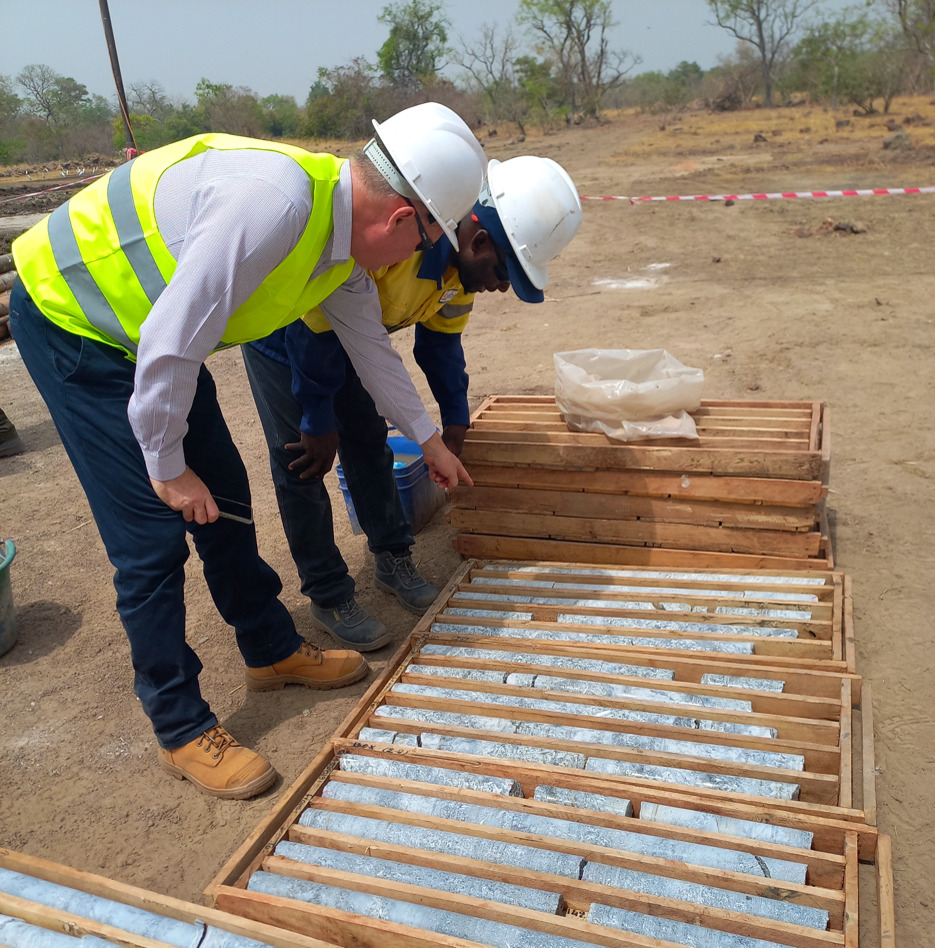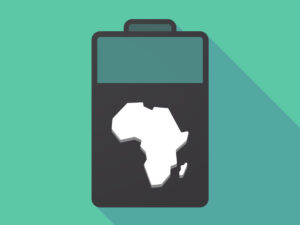Africa’s first lithium mine on track as Leo Lithium eyes Mali DSO sales in 2023

Leo Lithium managing director Simon Hay.
- Leo Lithium boss Simon Hay says lithium customers including its Chinese JV partner are bullish on the long term outlook for the battery metal
- Their US$255 million Goulamina mine in Mali, due for first concentrate in mid-2024, remains on time and budget
- Leo plans to ship DSO to generate early funding and establish mining and logistics network for first major African lithium mine
Lithium prices have been falling in China and north Asia so far in 2023, sending waves of panic through retail investors that the best days of lithium stocks may have been behind them.
But those close to the action say the booming electric vehicle market, propelled by government support and auto manufacturers’ decisions to invest in the generational shift from internal combustion engine cars, is a long term play.
Simon Hay took the helm of Galaxy Resources, owner of the Mt Cattlin mine, in 2019 when the lithium industry was on its knees.
In just two years he steered the firm into a mega merger with Orocobre to create the $7.5 billion ASX giant Allkem (ASX:AKE).
Now building Africa’s first major lithium mine at Goulamina with Leo Lithium (ASX:LLL), Hay says the power relationship between miners and their customers could not be more different.
“If you go back to 2019, they were saying, well Tesla said, there’s no lithium shortage,” Hay said.
“And now, the OEMs are coming to the mining companies. You see that with Ford and GM doing deals with Liontown and Ioneer so I think it’s changed enormously, they realised that they have to change their procurement models.
“You can’t just ring up the phone and buy lithium, you’ve got to take a long-term view.
“(There’s) so much investment needed, you’ve got an electric vehicle, you’ve got the cell manufacturing, you’ve got the cathode manufacturing, you’ve got conversion, you’ve got mining and concentrating, each one of those is a $50 billion industry in itself.
“And it all needs to grow enormously at 30% CAGR for the next decade. It’s totally different to where it was 2019.”
Leo roaring about long-term fundamentals
Once it is built next year the Goulamina operation in Mali will have a more than two decade life ahead of it, with its first stage to see 506,000t of spodumene shipped each year.
A 50-50 JV with China’s largest lithium company Ganfeng, half-owner of Mineral Resources’ (ASX:MIN) Mt Marion mine in Western Australia, the operation could ramp up to 831,000tpa in a second phase to be undertaken after the mine opens in 2024.
Having Ganfeng onside has been beneficial for managing the supply chain and logistics of the construction period. A ball mill with a normal lead time of two years has taken just nine months to prepare for delivery from China to Mali with the help of Ganfeng’s local knowhow.
But it also gives Leo a front row seat to shifts in what is still the key market for lithium prices in China, with JV partner and spodumene offtaker Ganfeng planning to use the product to supply a new lithium hydroxide plant in Fengcheng, Jiangxi and another in Sichuan.
According to Fastmarkets MB, spodumene spot prices on Friday fell US$500/t to US$6750/t, down around 20% off their late 2022 highs of US$8288/t.
But Hay says Ganfeng’s long-term outlook was “super bullish”.
“They’re looking at the long term, and they can see deficits coming, they can see a need for all the lithium they can get, they’re pushing us to go fast,” he said.
“They want us to expand and bring on stage two, so they need every tonne we can produce. So that’s the long term and the medium term.
“I think the short term, there’s, we’ll just say, conflicting views. You see prices coming off a little bit.
“If you think about China over our summer, they had COVID, they had the reopening, they had (EV) subsidies coming off, and they had Chinese New Year. So all of that was all sort of negative about no need to buy lithium right now.
“They’re coming out of it now, I don’t think it’s at the rate it was previously. I think it’s still a little bit softer than what it was. But the long term is just really strong.”
Prices remain remarkably high compared to 2019 levels, and well above Leo’s planned cost of production of US$365/t.
“(At Galaxy) we were selling lithium spodumene at US$350 a tonne, US$360. That was the trough price,” Hay said.
“What was the peak price, US$8300?
“It’s incredible — 20 times — so the whole industry has changed enormously, there is so much interest … customers, offtakers, investors, analysts, financiers, there’s so much interest and you read every day there’s a deal being done.”

African discount
Leo could potentially hit cash flow from Goulamina by the end of the year, eyeing two 30,000t shipments of direct shipping lithium ore in the fourth quarter.
The US$255 million mine is 12 months into a 27-month build, one which Hay says is on time and budget.
The DSO sale will also establish the logistics network and test mining and crushing for the development, with Ganfeng keen on taking the 1.2-1.5% lithium product to be processed in China.
Leo plans to transport its spodumene along a 1000km transport route to the port of Abidjan in Cote d’Ivoire, where it has a deal to send a minimum of 250,000tpa over 10 years.
It is also lining up transport routes to diversify its political risk through San Pedro in Cote d’Ivoire or Dakar in Senegal, around 1600km from the mine, which is located 150km south of landlocked Mali’s capital Bamako.
Core Lithium (ASX:CXO) showed it can be a strong pathway to early income, banking US$951/t on a sale ahead of the commissioning this year of its Finniss mine in the Northern Territory.
Goulamina is one of the top seven hard rock lithium deposits globally at 142.3Mt at 1.38% Li2O. Its most recent resource expansion of around 33Mt came at a cost of just $4 million from only four months of drilling.
But the developer was a $665 million stock as of February 21, and has barely moved since its $100 million IPO last year.
By contrast, Core will produce just 160,000tpa of spodumene concentrate at Finniss and is a $1.76 billion company.
Liontown is valued at almost $3b, will open the doors of its Kathleen Valley mine in WA’s Goldfields around the same time as Leo commissions Goulamina, and is of commensurate size.
While Liontown does own 100% of Kathleen Valley and does not have the potential, unlike Leo, to cede a 10% free carried interest via an as yet unexercised government option, it has just increased its capex estimate by $350 million to $895 million on the back of scope changes, labour pressures and inflation.
Unlike its Australian peers, Hay says the firm is yet to see inflation impact its capex in Mali.
“West Africa is your traditional drawback, that comes with a discount and that gets removed progressively as you get closer to production,” Hay said.
“So we expect to see that subside over time. But for us, it’s all about execution.
“The equipment coming out of China through Ganfeng has really kept costs down. We’re getting structural steel and plate steel out of the Philippines, I think … and that came in on budget.
“The logistics components of just bringing all the equipment to site is also another major package and that’s on budget. And that was good because I think we saw in ’21 … a lot of supply chain pressures and shipping costs went right up.”
He noted Mali has a strong mining labour force already with 10 operating gold mines, while sanctions that prevented materials from crossing the border with several West African states are no longer in place after its military leadership, which came to power following a 2021 coup, has pledged to hold free elections this year in a transition to democratic rule.
Operating costs could be a different story, with Leo planning to assess the impact of higher diesel and explosives prices closer to entering production.
But lithium concentrate prices in the thousands of dollars a tonne provide a strong buffer barring major production ramp up issues.

Shadows of the past
Another potential overhang that Hay acknowledges is the travails of its parent company Firefinch, still Leo’s largest shareholder with a 17.6% stake.
Leo is for all intents and purposes a completely separate entity, its spinout born out of the deal put in place between Morila gold mine owner Firefinch and Ganfeng to fund the Goulamina development.
LLL is still in the same office block as the stripped down Firefinch, waiting for new digs across the road in West Perth to be ready.
“The Firefinch side of things has been really disappointing from our perspective. It’s absolutely nothing to do with us and yet, it’s there,” Hay acknowledged.
“We’re just hopeful that it goes away soon, they sell Morila, a new buyer comes in, whatever happens with their shareholding will happen, they’ve said the company’s for sale.”
But West Africa boasts enormous potential as a new lithium province, Hay believes.
Piedmont Lithium-backed Atlantic Lithium (ASX:A11) boasts the nearby Ewoyaa mine in Ghana, for instance. But Hay says there is enormous lithium exploration potential in Africa.
“Goulamina outcrops so it was discovered by a geologist walking around and looking for something,” Hay said.
“There are some other deposits to the east of us, which also outcrop and they’ve been discovered.
“But you can see a number of our pegmatites are not outcropping. So I think that’s a safe guess that there is more.
“We’re aware of a few parties exploring in Mali, but not many. And we expect to take over the next short while a regional exploration approach to West Africa. So we’re optimistic there’d be more.”
And while African mining investors may have had jitters seeing AVZ’s (ASX:AVZ) battle with China’s Zijin over the Manono lithium project in the Democratic Republic of the Congo, Hay says there are no concerns over its tenure in Mali, where a resource upgrade is due by the middle of the year and reserve update expected around August.
“We have the mining concession 30-year tenure, granted in 2019, and it was a single entity so it wasn’t partly owned. There’s no dispute, it was transferred from Firefinch to Leo in the demerger and that had the Prime Minister’s signature on that transfer. So for us I don’t worry about tenure,” Hay said.
“That is secure, and we’ve got Ganfeng who’ve paid for their share of the JV and we’re working together quite harmoniously.
“The risks are totally different and the other thing with Mali and the gold mining industry, they have a very long history of the rule of law.
“Mark Bristow said that last week at Indaba, they’re comfortable operating in Mali, Clive Johnson from B2Gold, they’re investing another US$400 million in Mali themselves.
“I think what the majors are doing in Mali shows that there’s confidence and stability, albeit security being a challenge.”
Heading downstream?
As Goulamina heads into production next year, thoughts about the future are already crystallising.
The DSO sales, anticipated to come at costs of US$260-300/t with freight costs of US$47.50/t, will form part of the financing package for the US$255m first stage, which includes US$130m in JV equity provided by Ganfeng, US$43m in cash contributions from each of Leo and its JV partner and a US$40m expandable debt facility the ASX-listed company is yet to draw on.
A second stage would cost a comparatively cheap US$70m to add 325,000tpa of SC6, thanks to the installation of critical infrastructure in the initial build. A scoping study is expected this year with a front end engineering design phase to begin before New Year’s.
A study meanwhile on a downstream processing facility to produce refined lithium chemicals in Mali is expected to start in the first half of 2023.
“We have discussions underway with Ganfeng around Stage Two, and where we potentially convert that together, or with a third party,” Hay said.
“So they’re early stage discussions but we aim to progress those discussions this year to the state that we can start talking about something concrete.”
Leo Lithium (ASX:LLL) share price today:
Related Topics

UNLOCK INSIGHTS
Discover the untold stories of emerging ASX stocks.
Daily news and expert analysis, it's free to subscribe.
By proceeding, you confirm you understand that we handle personal information in accordance with our Privacy Policy.








